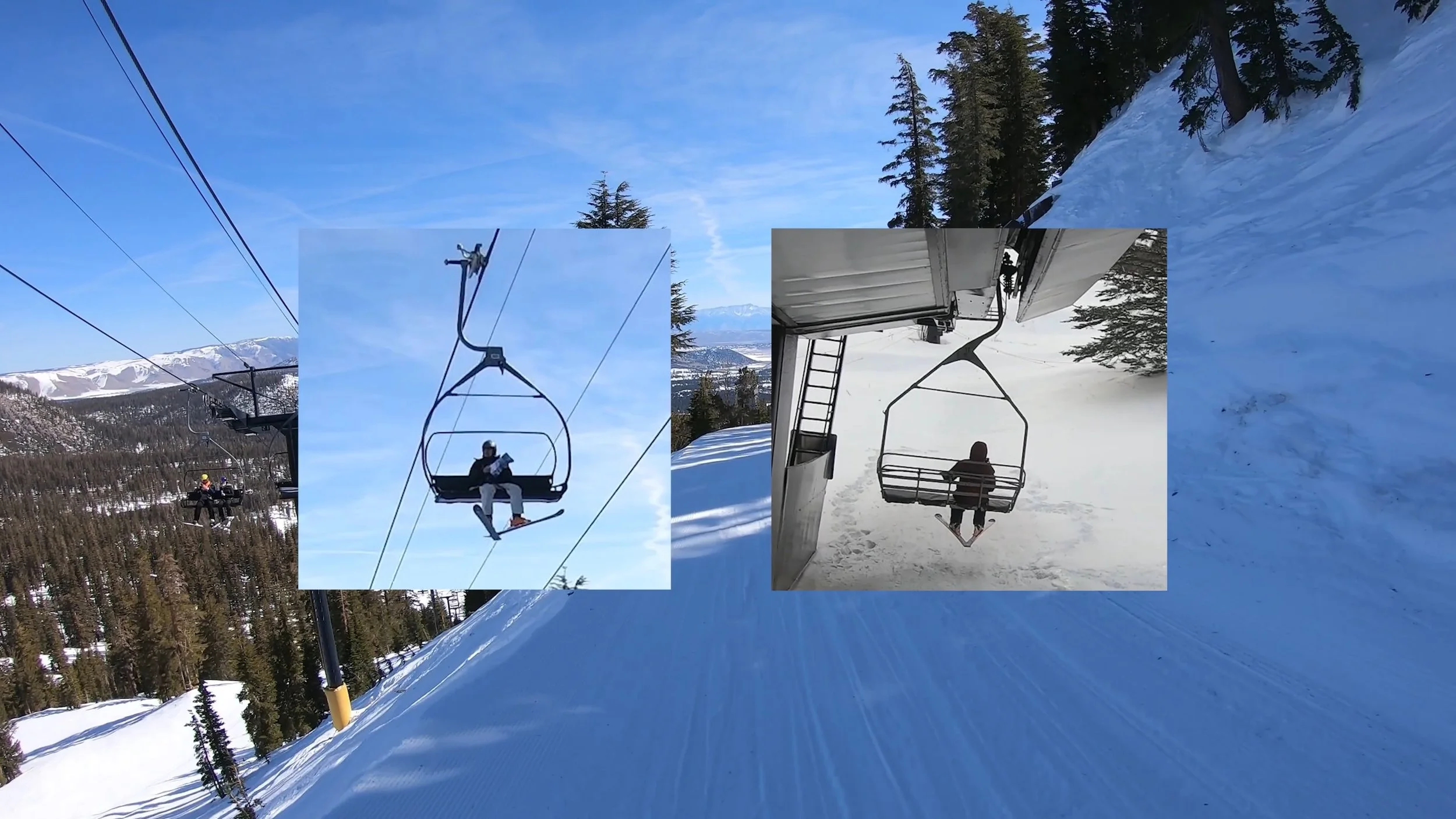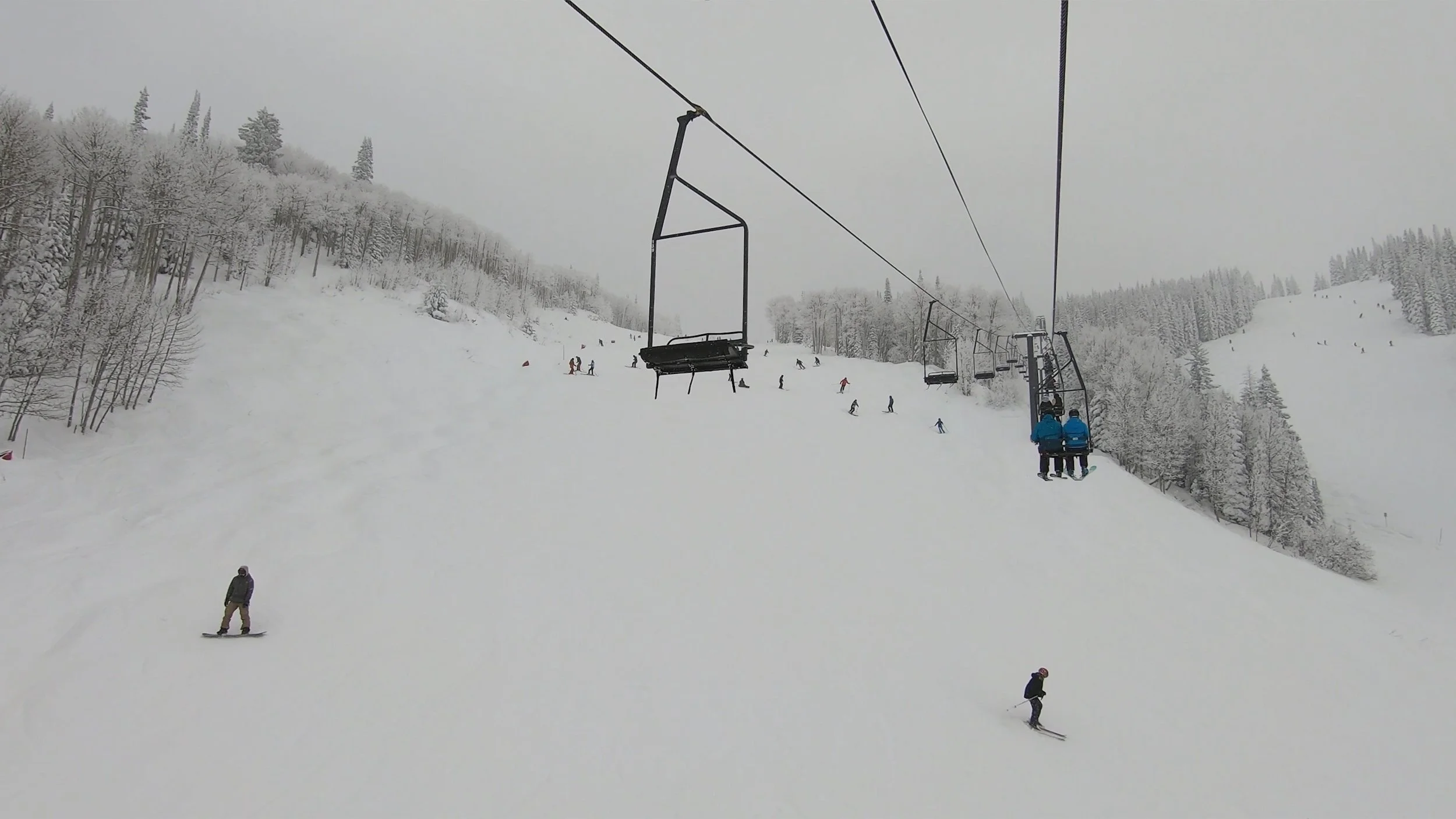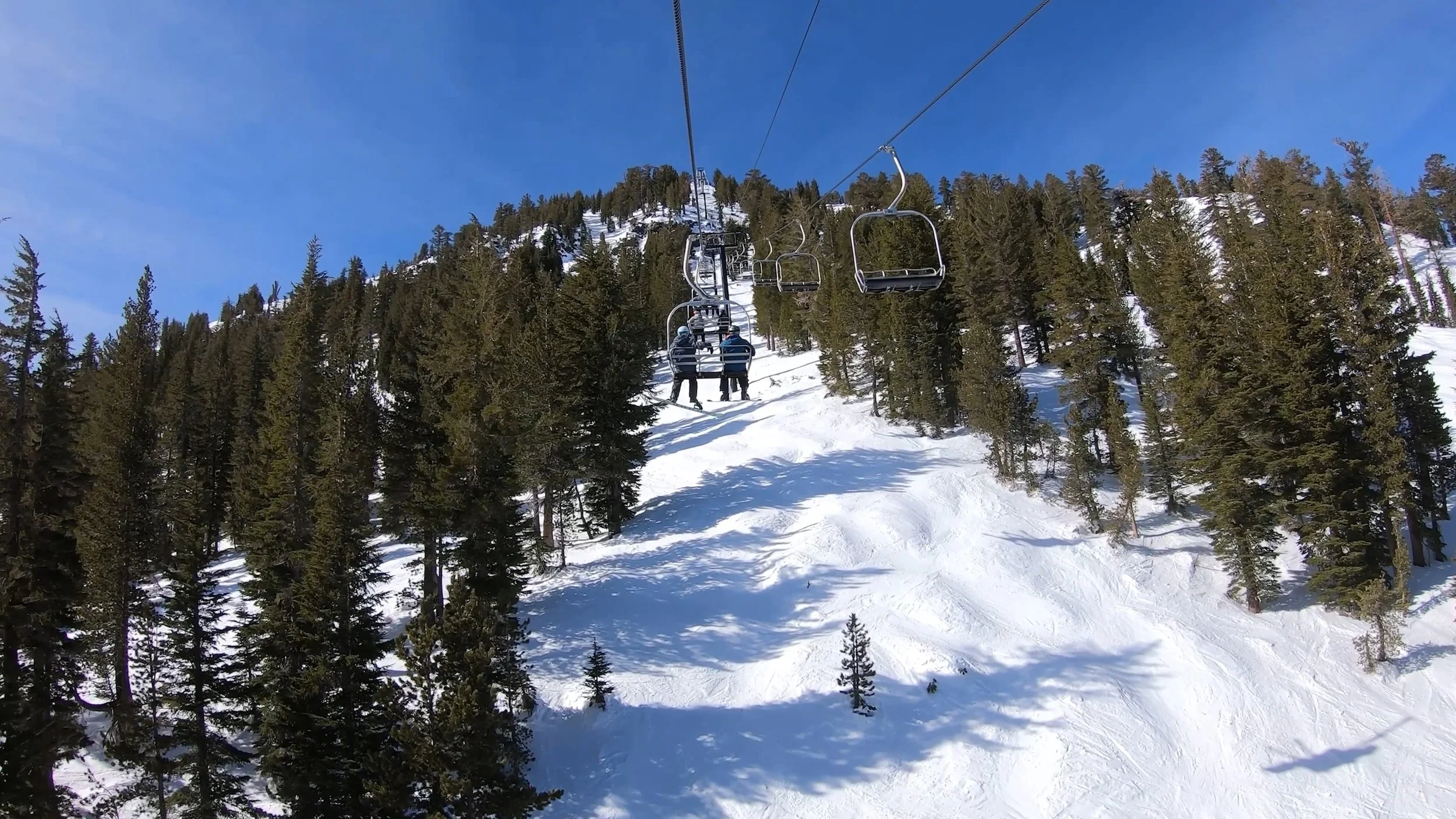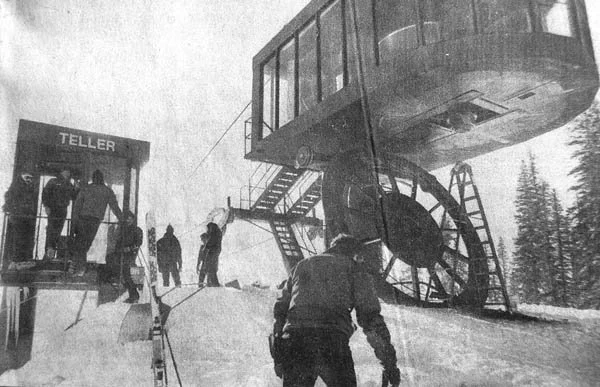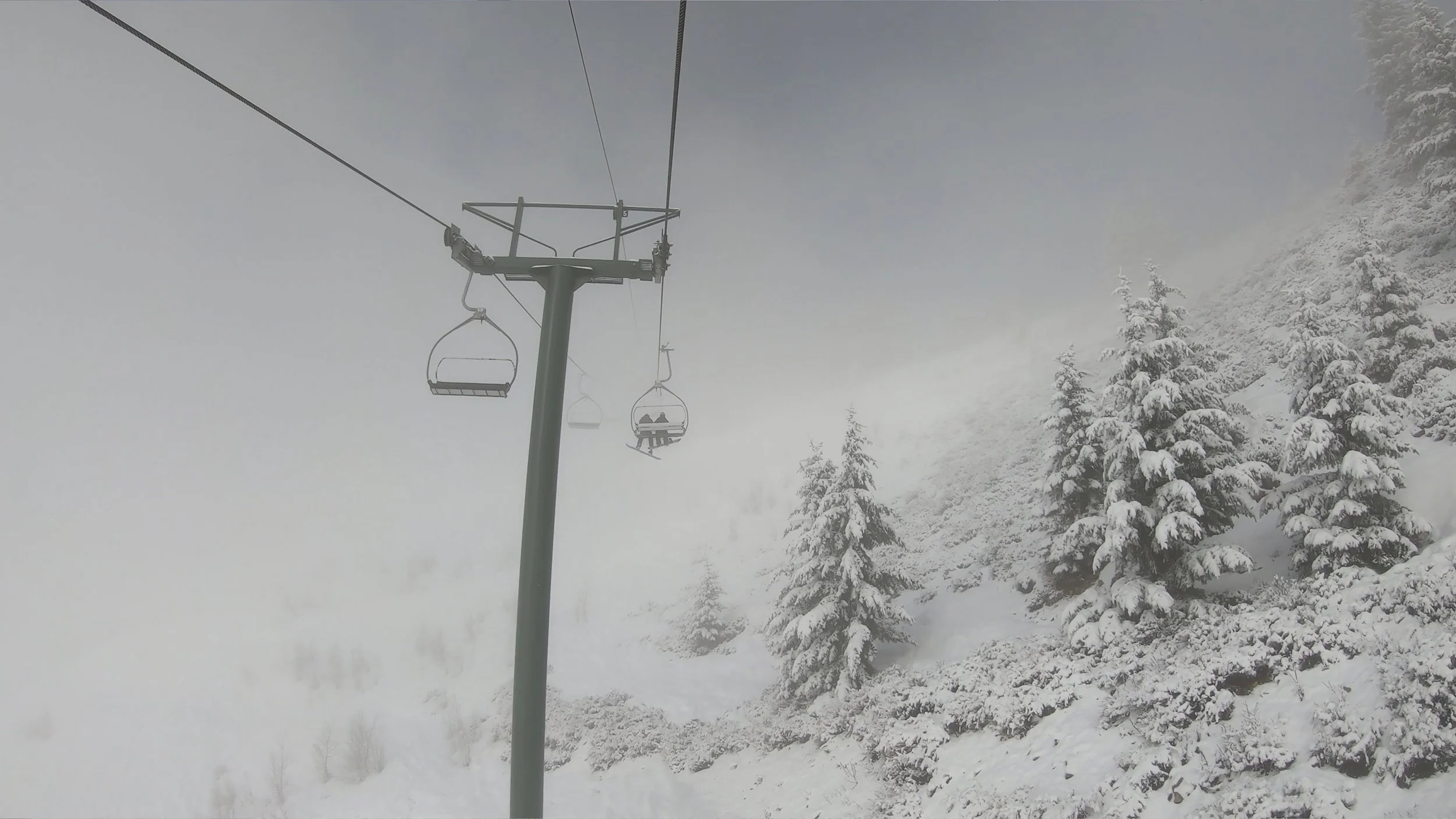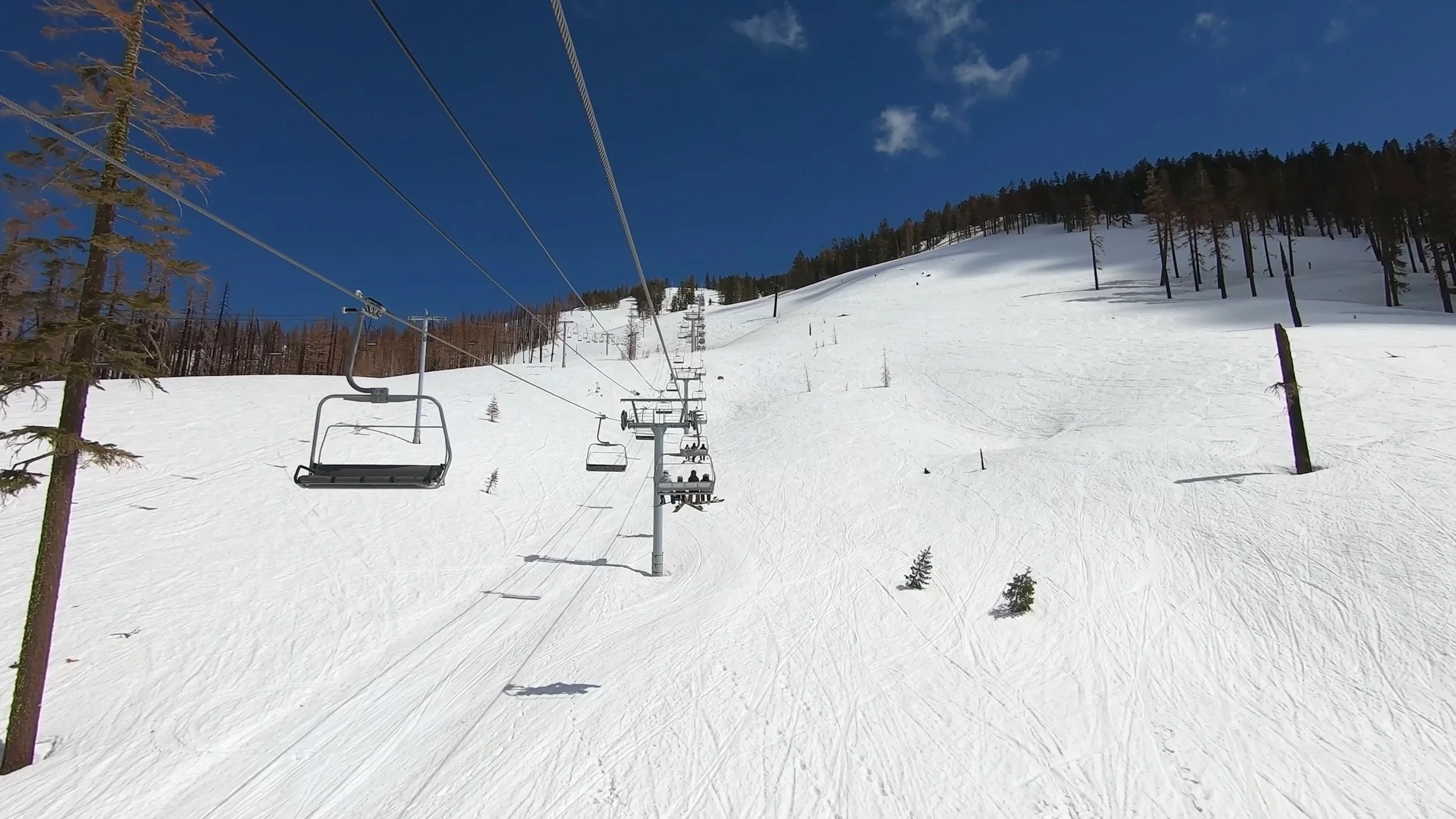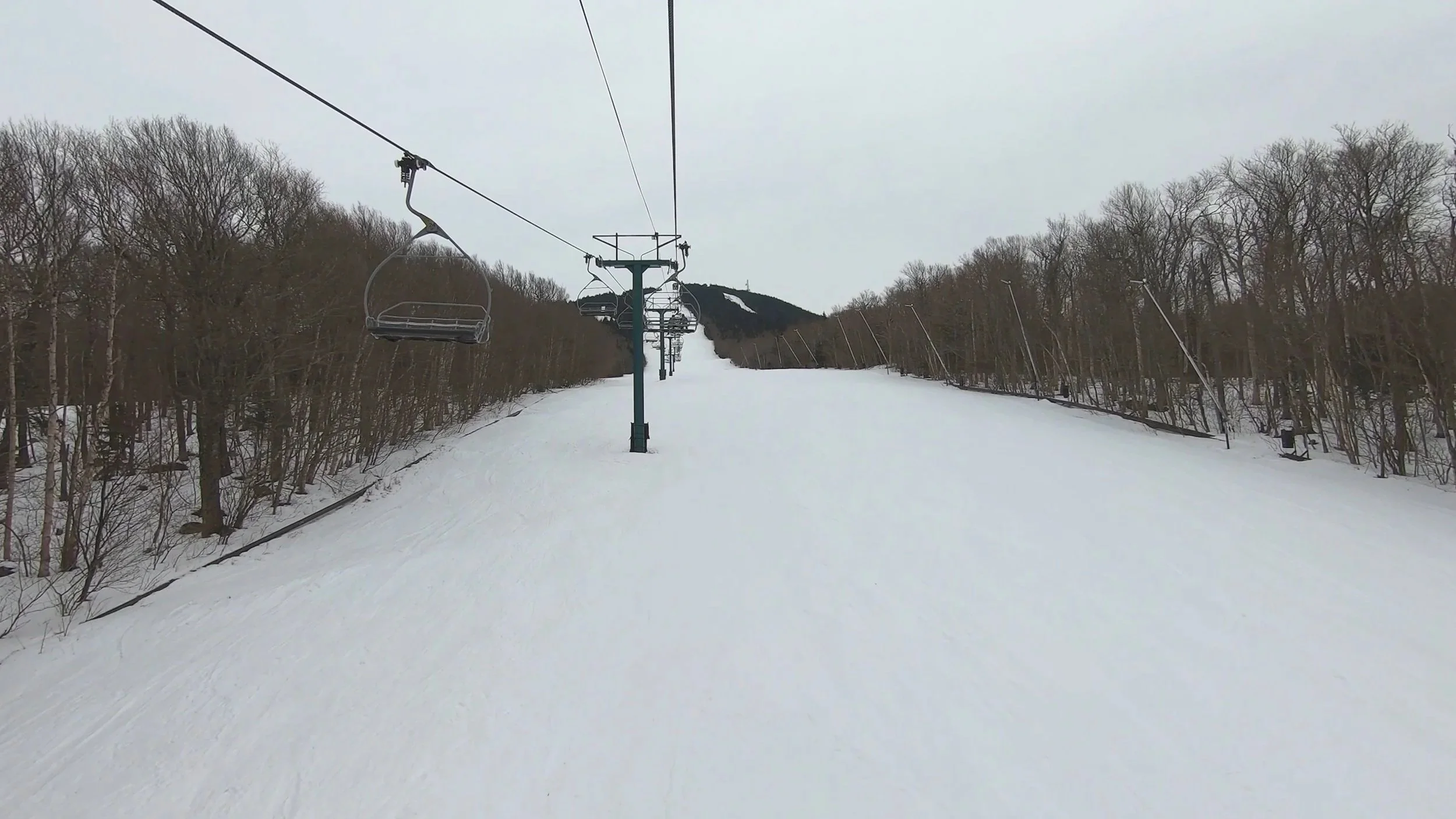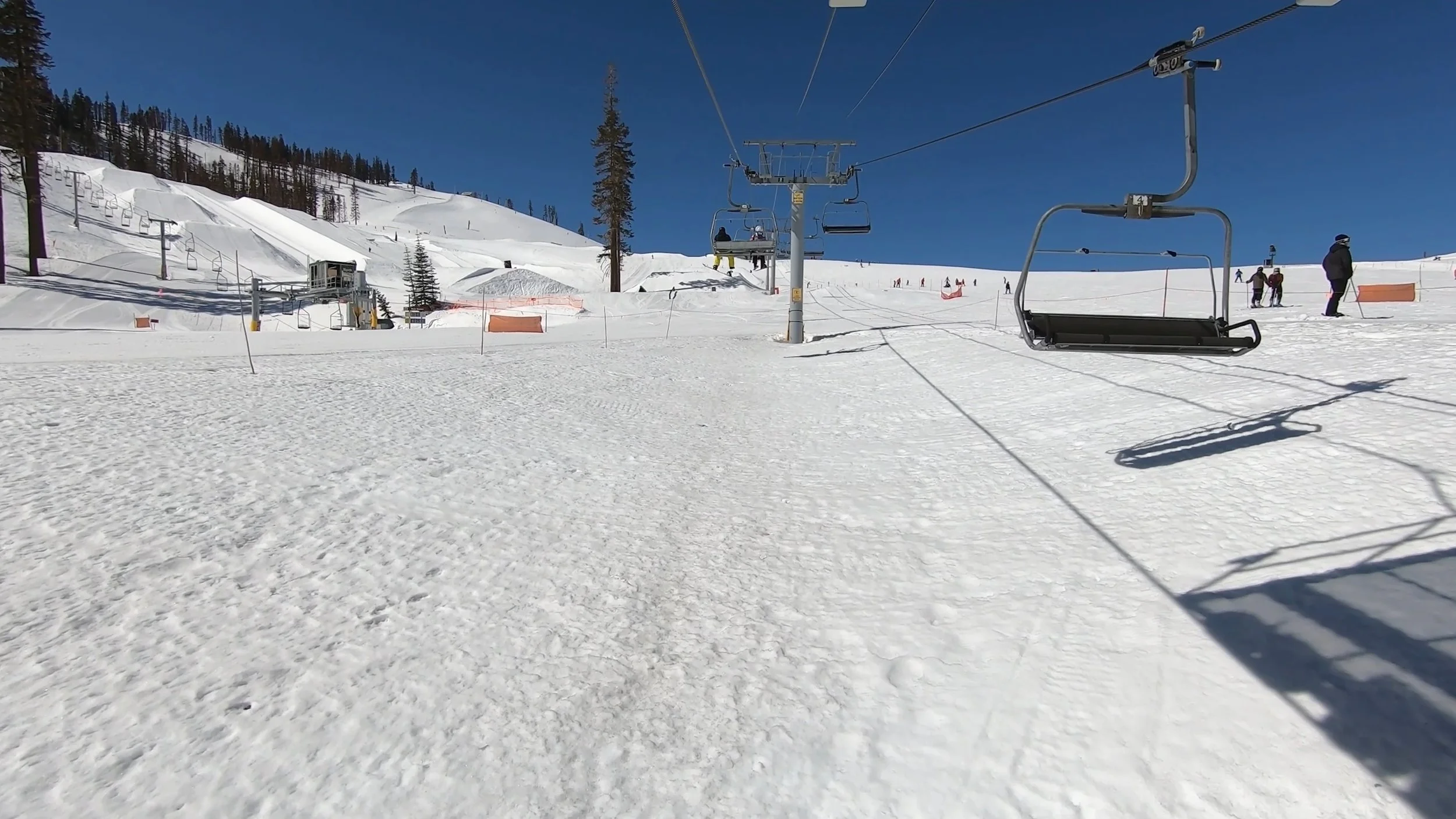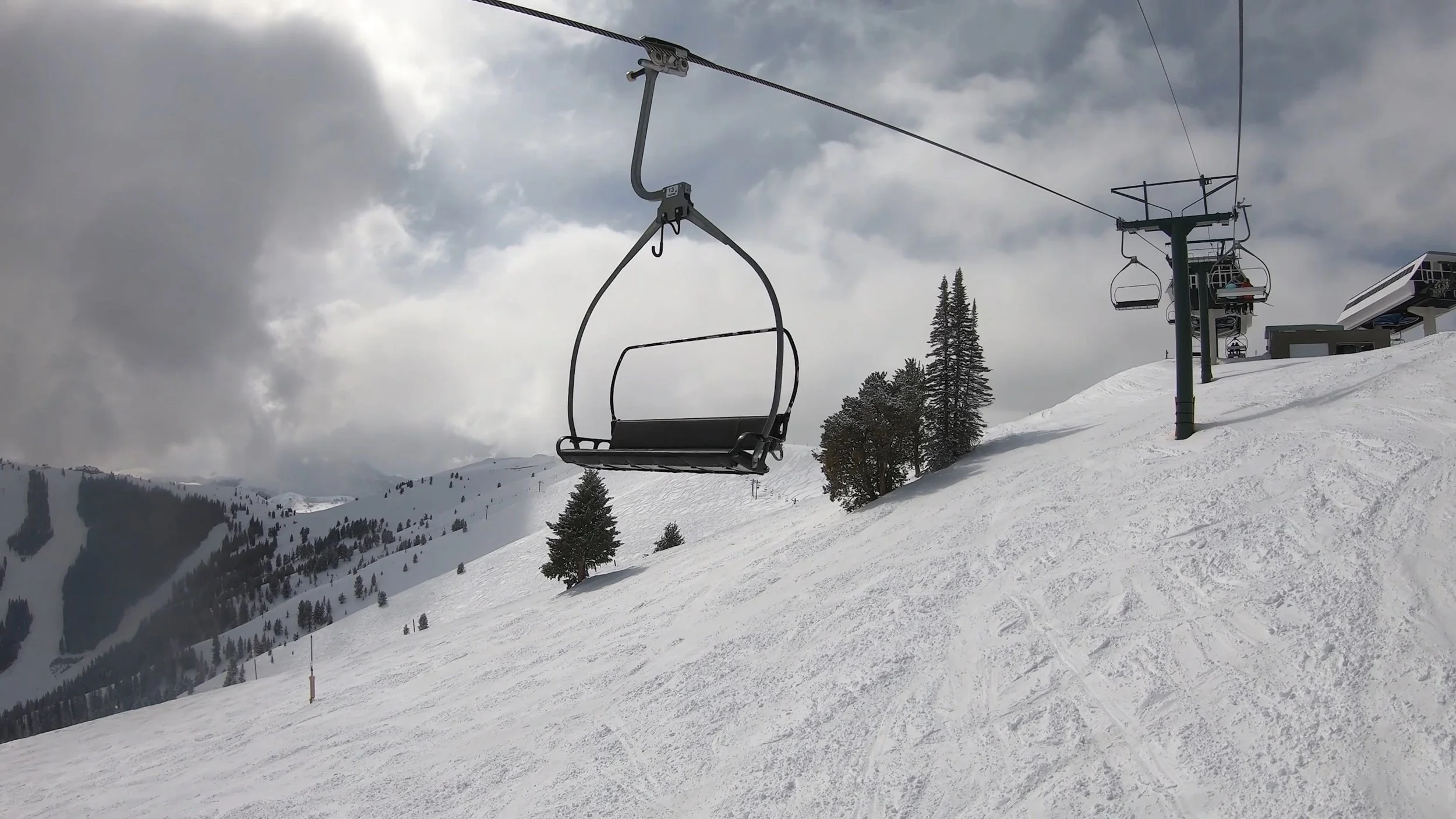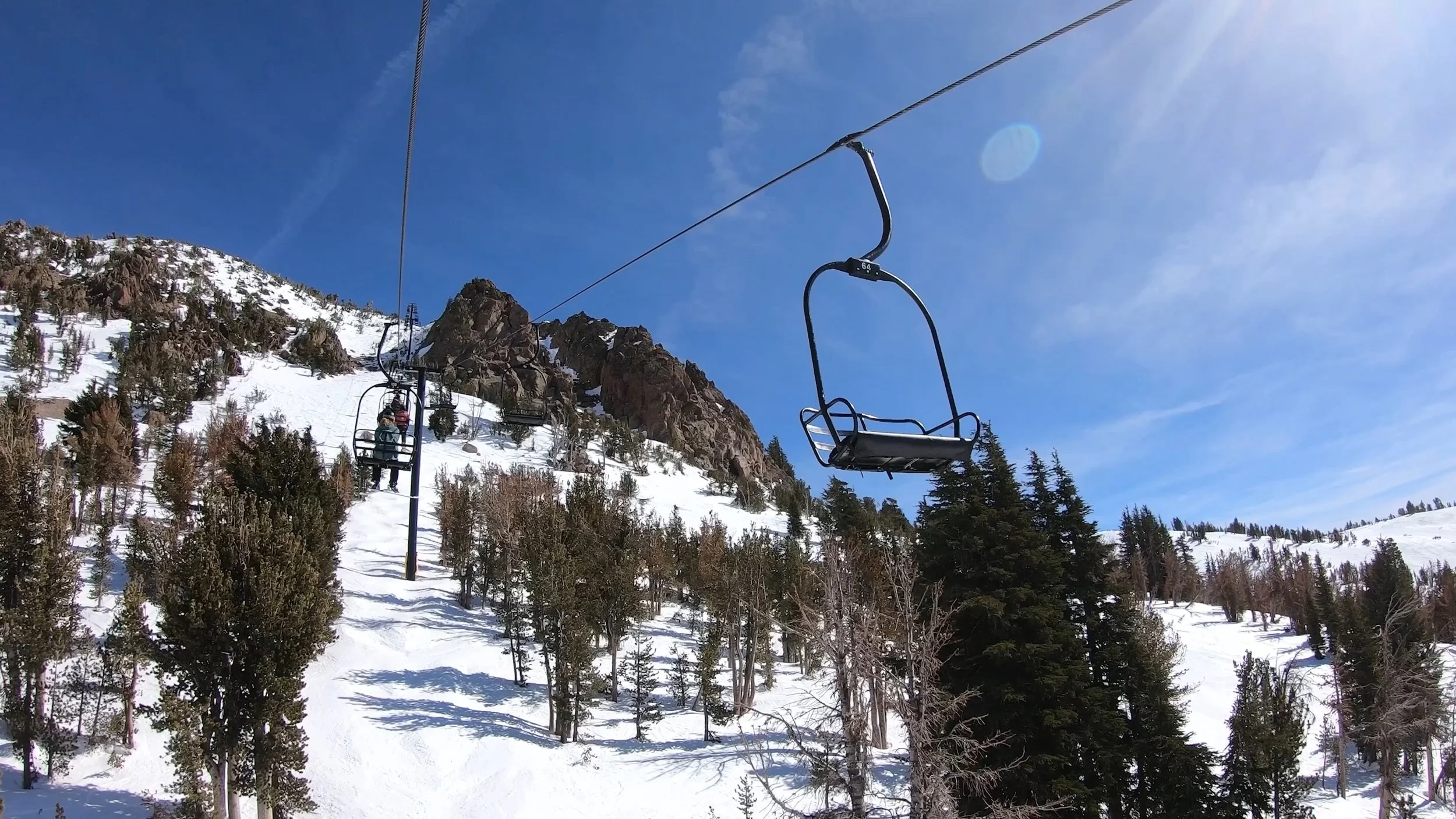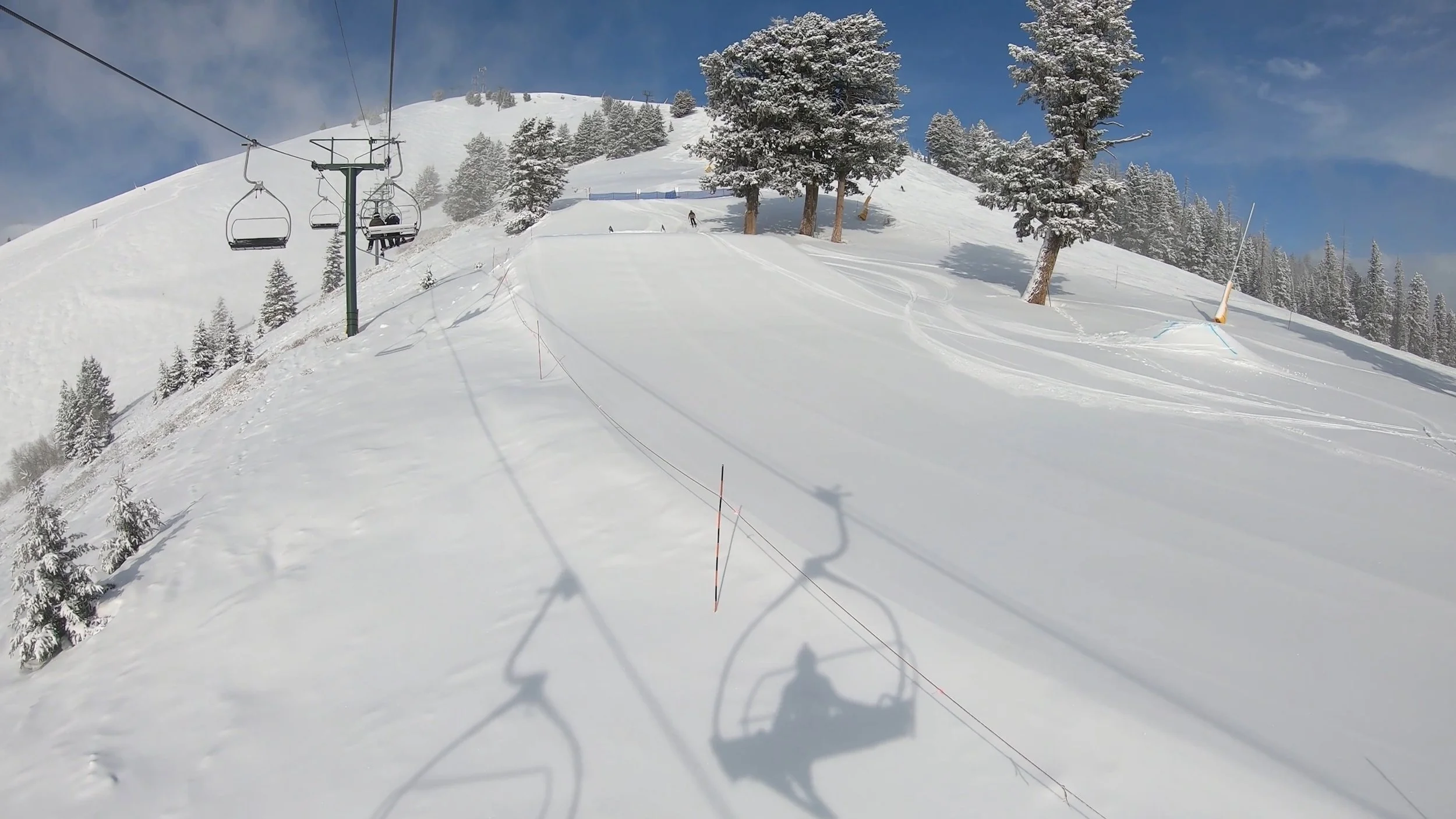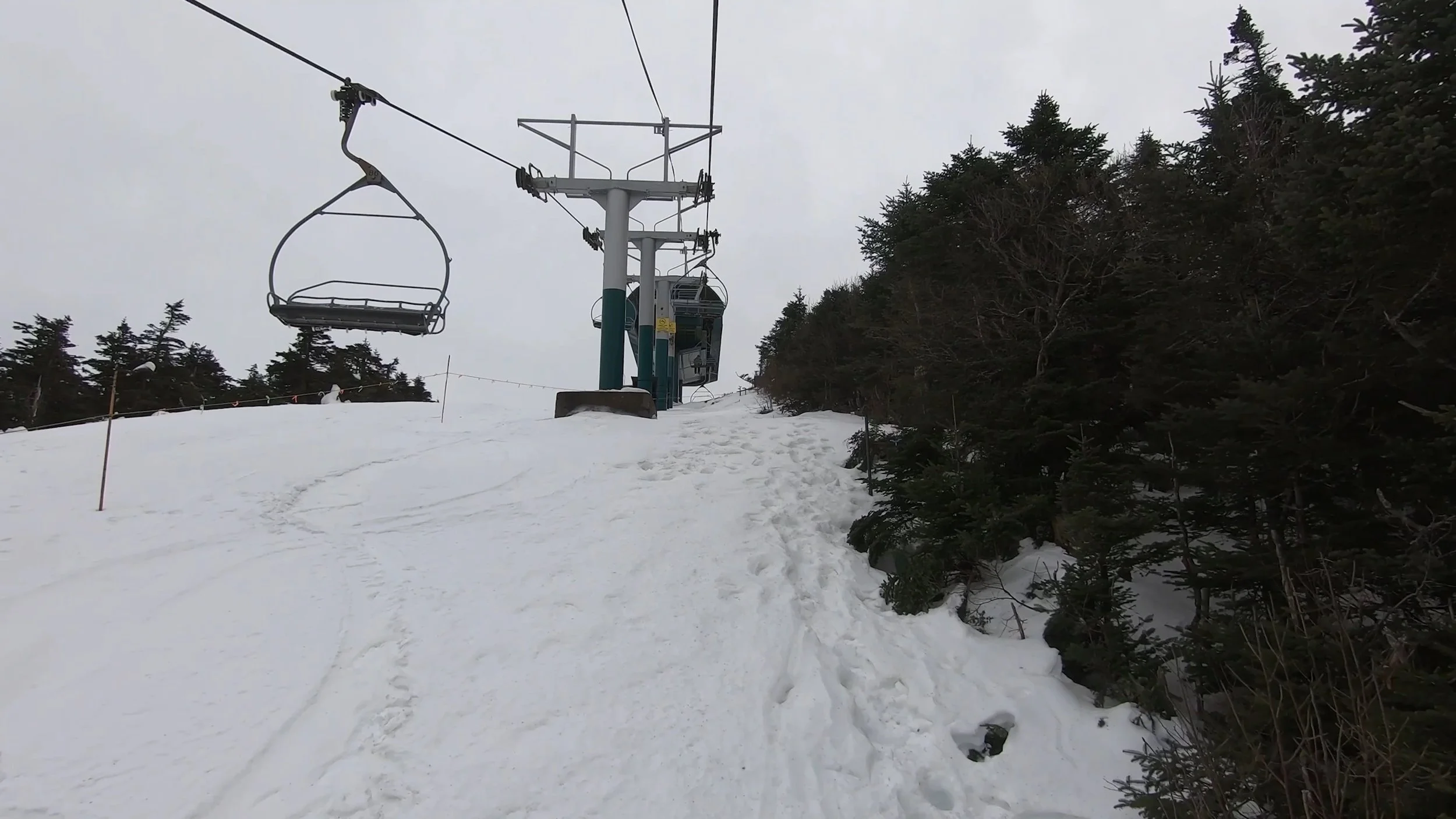The Yan Detachable Quad: Skiing’s Most Dangerous Lift
If you’ve been on a ski lift with teardrop or pentagon-shaped chairs in recent years, you’ve ridden on a chair that once had catastrophic design flaws.
Background
If you’ve been to a North American ski resort in recent years, there’s a small chance you’ve seen a teardrop- or pentagon-shaped chairs during your visit. But it turns out these chairs aren’t just some random design quirk—they’re one of the most visible remnants of Yan, a company whose meteoric rise and catastrophic fall reshaped the North American lift scene for good.
To many lift enthusiasts, the Yan teardrop chairs feel uniquely comfortable, stable, and even beautiful. But behind that distinctive look lies one of the most cautionary tales in ski industry history. So what exactly caused the Yan detachable chairlift to become so dangerous that every ski resort was forced to replace or completely overhaul them?
In this piece, we’ll go through the horrific accidents that happened on these lifts, the associated aftermath, and the situation we find ourselves in today where nearly all remnants of their existence are gone from the slopes. Let’s jump right into it.
Yan started out by building double chairlifts, like the Bar-UE chair at Steamboat pictured above.
The Start of Yan as a Company
In order to understand how one type of ski lift resulted in so many accidents, we have to first cover how Yan got started as a company. In 1965, a Polish immigrant and former ski racer named Yanek Kunczynski set out to build his own ski lifts. Kunczynski had arrived in the United States a few years prior, working for the French lift maker Poma and even helping install lifts at Squaw Valley (now Palisades Tahoe) in California; in fact, he actually married the resort founder’s daughter.
But he decided he could build his own lifts better, and accordingly, he founded a company called Lift Engineering & Manufacturing Co., based in Carson City, Nevada. He marketed his ski lifts under the brand name “Yan,” the English spelling of his first name. In 1968, he installed his first two double chairlifts: the Belmont and Links lifts at Squaw Valley.
The Yan ski lift logo.
From the very start, Kunczynski was just as much a charismatic salesman as an engineer. He had a knack for connecting with ski resort owners over après-ski drinks and sketching bold lift concepts on cocktail napkins. These personal relationships, combined with his immigrant “up-by-the-bootstraps” story and ability to show proof-of-concept installations at Squaw Valley, helped Yan gain early clients in a tight-knit ski industry. By the 1970s, Yan’s company was carving out a significant niche in the U.S. lift market.
Several factors fueled Yan’s rise. First, cost and speed: Kunczynski was known to offer lifts at prices significantly below those of the larger European manufacturers. He was obsessed with reducing construction and maintenance costs. Famously, he sometimes shipped raw steel to ski areas and had components welded on-site in the parking lot, rather than prefabricating everything in a factory. This unorthodox approach let him realize ideas almost as fast as he could draw them, and resort owners loved the rapid turnaround and lower bids.
Second, innovation and aesthetics: Yan introduced sleek, modern designs at a time when many lifts were utilitarian. He was credited as the first lift maker to really emphasize aesthetics—painting towers, streamlining machinery, and arranging lift towers with “a sense of beauty,” as per one resort executive. But besides making sure his lifts looked good, Kunczynski was also an innovator in control systems; his company developed its own low-voltage DC motor controls specifically adapted for ski lifts, simplifying operations for lift operators. These design innovations made it so that there were only two switches in operator booths—one to start/stop the lift and one to select the speed—at a time when competitors were much more complex to run.
Yan firmly established itself as a manufacturer of fixed-grip chairlifts by the 1980s.
By the early 1980s, Yan had firmly established itself as a major North American lift manufacturer, especially for fixed-grip chairlifts, or the traditional kind where chairs are fixed to the cable. The company built over 200 fixed-grip lifts over the decades, and these installations spread across the entirety of North America. In the West, places like Mammoth, Park City, Alta, Steamboat, and many others had multiple Yan lifts dotting their slopes. In New England, prominent resorts under the S-K-I Ltd. banner (such as Killington and Mount Snow) opted for Yan lifts as well. During this period, Yan became synonymous with solid, workhorse lifts that offered a compelling blend of affordability, style, and genuinely decent reliability. Yan’s tower designs were famously overbuilt; so much so that in some cases, a ski area could upgrade a Yan triple-chair to a quad simply by swapping out the chairs, as the towers and line could handle the extra weight. One notable case was Killington’s Bear Mountain Triple, which was installed in 1979 but converted to a quad just five years later.
Yan also moved to take on the gondola market, installing its first one at Squaw Valley in 1983 and its second one at Keystone in 1984.
However, beneath the shiny exterior of Yan’s success, there were early signs of trouble. Kunczynski’s relentless drive for speed sometimes meant cutting corners on testing and fabrication, and even in the early days, regulators were starting to worry about quality control. One member of Colorado's tramway safety board raised alarms in the mid-1980s about Yan’s field welding practices, only to be “blasted by the ski industry” for questioning a popular supplier. Both Squaw Valley and Keystone raised concerns about the reliability of their gondolas, and when Squaw Valley decided to rip out theirs after just two years of service, it effectively ended the once-extremely-close relationship between the two entities.
The lift-buying frenzy and Yan’s charm seemed to overshadow safety warnings… until an unfortunate incident grabbed everyone’s attention.
A photo of the catastrophic bullwheel failure on Keystone’s Yan-built teller lift in 1985.
Source: Summit Sentinel via Summit Daily
First Serious Yan Accident and Colorado Fallout
In 1985, a serious accident threw a spotlight on Yan’s engineering practices. At Colorado’s Keystone resort, the Yan-built Teller double lift suffered a catastrophic failure: a sudden derailment that hurled 49 people to the ground. Two people were killed and 47 injured in this horrific incident, making for what became the worst lift accident in Colorado history. Investigators found subpar weld quality on that lift, and Kunczynski himself later admitted to an “error in machining.” Yan’s company quietly settled multiple lawsuits for millions of dollars. This tragedy unsurprisingly shook confidence in Yan to a certain extent; Keystone suspended operations of its Yan gondola, resulting in that lift also lasting just two seasons. Colorado regulators became extremely wary of Kunczynski’s products after the Keystone incident, and one official later lobbied to bar Yan from installing any detachable lifts in Colorado in the years that followed (and in fact ended up being successful in doing so).
But despite the Keystone accident, many resort operators continued to stand by Yan. At that point, it could be seen as a terrible but notably isolated failure on an otherwise extensive resume of successful installs. Dave McCoy, founder of Mammoth Mountain in California and an early Yan customer, later noted that his resort had “no injuries related to Yan lifts” and suggested that poor maintenance at certain other areas was to blame for mishaps. This sentiment—that Yan equipment was fundamentally sound if cared for properly—was shared by many other powerful voices in the industry. Thus, as the mid-1980s continued, Yan remained a staple in North American lift sales. That set the tone as an emerging technology was rapidly gaining buzz: the detachable high-speed chairlift.
The J6 chairlift at June Mountain was the first Yan detachable lift ever built.
The First Detachable Yan Lifts
In the 1980s, ski resorts were eager to shorten lift ride times and reduce lift lines, which led to the rise of high-speed detachable quad chairlifts. Unlike fixed-grip lifts, detachables allow chairs to unlatch from the main haul cable and slow down in the terminals for loading and unloading, then reattach and speed up for the ride. For the most part, these detachable lifts came standard as quads, offering upgrades from the typical doubles and triples at the time. European manufacturers pioneered this technology throughout the 1970s, typically spending several years refining their detachable grip designs before installation. But Yanek Kunczynski, never one to be left behind, jumped into this arena with characteristic haste and boldness.
By his own claim, Yan designed and installed its first detachable chairlift after only about one year of R&D, a remarkably short development cycle. That first lift debuted in 1986 at June Mountain in California (as a smaller sister resort to Mammoth, June served as an ideal test bed for Yan’s new technology). This made Yan one of the earliest entrants in the detachable lift market. For context, Doppelmayr and Poma had introduced detachables in North America just a few years prior; Yan was attempting to leapfrog by compressing the development schedule and offering a more affordable high-speed lift. Economically-minded resorts were intrigued—if Yan’s detachables worked, they promised the coveted higher speed at a lower price point than the European imports. And notably, since Yan became the first U.S.-based supplier of detachable chairlifts, there was an appeal in the region to buying American.
The unique design of Yan’s detachable grips set them apart. Most detachable lifts use heavy-duty coil springs (metal springs) in the grip mechanism to maintain clamping force on the cable. Yan, however, opted for rubber compression springs (sometimes nicknamed “marshmallow” springs). The idea was that rubber could provide the necessary tension but potentially with less cost and weight, and with a self-damping quality. Additionally, Yan’s detachable grips relied in part on gravity to assist clamping. This meant the grip’s jaw pressure on the cable could be influenced by the weight of the chair assembly, meaning bounces or swings could momentarily reduce the clamping force (unlike the grips of traditional competitors).
Another signature element of Yan’s detachables was the carrier (or chair) design. Yan started with a distinctive pentagon-shaped seat back on its earliest detachable quad chairs, and the company shortly thereafter moved to an even more unique “teardrop”-shaped one that it would use for the rest of its existence. The shape not only looked futuristic, but it was also quite comfortable according to many riders. The Yan detachable terminals (the loading/unloading stations) were built with a series of rubber tires to slow and launch the chairs, similar in basic concept to other manufacturers. But given Yan’s compressed development time, the overall system lacked the polish of its competitors—according to Liftblog, it was later described by one industry insider as essentially an “R&D project” being carried out in real time on the skiing public.
Despite some internal trepidation and key resignations (Yan’s own chief engineer, Les Okreglak, resigned during the detachable project over safety concerns), Kunczynski forged ahead with the Yan detachable chairlift project. The first Yan high-speed quad at June Mountain was soon followed by a huge barrage of projects the following year in 1987, including the Snowshed and Superstar Express at Killington, the Golden Express at Pico, the Sunday River Express at Sunday River (which was later renamed the Barker Express), the Grand Summit Express at Mount Snow, and another high-speed quad at June. All of these Yan detachable quads were among the first of their kind at their respective ski resorts, and the company single-handedly revolutionized the standard for lift infrastructure in the New England region over that one season (only one detachable lift, the FourRunner Quad at Stowe, had been installed in New England in a previous year).
In total, 31 Yan detachable chairlifts would be built in North America between 1986 and 1995.
The following year, June Mountain tripled down on its trust in Yan, installing an experimental lift called the quad monocable tramway, or QMC for short. Unlike conventional cable cars, this was a specialized aerial system with four loops of cable to stabilize cabins in high winds, something that put it conceptually ahead of its time and essentially made it the predecessor to today’s funitel.
Yan’s customer list for detachables grew quickly: Whistler Mountain in Canada purchased three Yan high-speed quads in the early ’90s, including one bubble lift, and Sun Valley in Idaho went all-in, eventually installing seven Yan detachable quads between 1988 and 1994. Other buyers included Sierra Ski Ranch (later renamed Sierra-at-Tahoe) in California, which installed three Yan detachables, Mammoth Mountain, Silver Star, and Lake Louise, which each bought two, and Alpine Meadows, Deer Valley, and Schweitzer, each of which bought one. By the early 1990s, Yan’s high-speed quads could be found from coast to coast.
In total, Yan built 31 detachable quad chairlifts in the U.S. and Canada between 1986 and 1995. This was an impressive number for a newcomer in that market, reflecting how Yan’s attractive pricing and prior relationships with resorts paid off. Many of these lifts were sold to repeat clients who trusted Kunczynski, especially Sun Valley, Whistler, and Mammoth. The gambit seemed to be working—Yan was grabbing a sizable share of the booming high-speed lift segment, and skiers and riders loved the new faster ride times.
However, not everything was smooth in this new world of Yan detachables. There were hints of quality issues from the outset. Shortly after the first installation of the Broadway Express at Mammoth, an incident occurred where some chairs apparently collided in the terminal. Mechanics at some resorts reported that Yan’s detachables were finicky to maintain. Still, in these first few years, no major injuries had occurred on the new lifts, and many ski areas operated their Yan high-speeds without serious incident. Unfortunately, as more of these lifts saw heavy use and years of service, cracks—both literal and figurative—started to appear.
California’s Sierra Ski Ranch (later renamed Sierra-at-Tahoe) was the site of the first deadly accident on a detachable Yan chairlift.
Yan Detachable Lift Accidents
The early 1990s proved to be a turning point for Yan’s high-speed quads, as a series of alarming accidents and failures unfolded. The troubles really came to a head starting in 1993, by which time many of the first-generation Yan detachables had been running for a few seasons and started accumulating wear. The most alarming and tragic incident that year occurred at Sierra-at-Tahoe (formerly Sierra Ski Ranch) in California; on April 4, 1993, a nine-year-old boy was killed and another child injured when several chairs on the Yan-built Slingshot detachable quad crashed into one another. Investigators determined that loose bolts on a grip led to a derailment, causing two chairs to “stack up” (collide) on the haul rope. Notably, this accident wasn’t the first sign of trouble on that lift; two months earlier, an empty chair had plummeted to the ground after a separate grip failure.
The Sierra Ski Ranch accident of 1993 was a red flag that something in the design or maintenance of these lifts was fundamentally problematic. Yan’s company quietly settled a wrongful-death lawsuit with the family, reportedly for $1.9 million. Yet even as lawyers handled the aftermath in that case, that was only one major accident. After all, Yan had bounced back from the tragedy at Keystone less than a decade earlier. The company continued installing more detachables over the next two seasons, including two at Sun Valley and one at Mammoth.
An illustration showing what happened during the Whistler Quicksilver accident. Source: University of Victoria
However, a far more consequential disaster was looming. On December 23, 1995 at Whistler Mountain, the worst ski lift accident in Canadian history struck on a Yan detachable, the Quicksilver Express bubble quad. During a standard emergency stop—or in other words, a quick stop the lift should have been designed for—a chain reaction of events caused multiple chairs to detach and fall from the cable. Notably, there had been several emergency stops already that day, so the chair was in all likelihood unwittingly being pushed to its limits. Eyewitness accounts and subsequent investigations described a horrifying scene: as the lift made an abrupt stop, multiple chairs on the downhill side of the cable started swaying ferociously, lost their grip strength, and then slid down the line. They struck a support tower and each other, which led to four grips failing completely and their respective chairs dropping 75 feet to the snowy slope below. Skiers and riders in those chairs were hurled out, with two people tragically incurring fatal injuries and eight others seriously injured. More than 200 riders had to be evacuated off the lift.
In the aftermath, a British Columbia government investigation scrutinized the wreckage and records of Quicksilver. The findings were damning: parts of the lift did not meet industry manufacturing standards. Specifically, Yan’s grip design was apparently not up to the task for the combination of Whistler’s long span between certain towers and the weight of those bubble chairs. The grips could not maintain adequate clamping force at a critical section of the line, and the design provided insufficient lateral clearance such that a swaying chair wouldn’t strike support structures. In essence, the lift was operating with a perfect storm of vulnerabilities: grips that could slip under dynamic loading, tower placements that didn’t forgive a swinging chair, and multiple emergency stops within a short period of time.
Alarms had actually been sounding (quite literally) at Whistler even before the deadly December incident. In the weeks prior, lift mechanics were getting frequent grip-force warnings on Quicksilver, with the system detecting grips not holding with full strength. These warnings were happening so many times a day that mechanics reportedly resorted to stuffing paper in the alarm to silence it. In hindsight, this was a sign of how routine the grip issues had become on that lift; it also highlighted a regulatory gap at the time: detachable lifts were not yet required to automatically shut down upon a grip force fault. That rule would change soon after these accidents.
The Whistler accident reverberated profoundly throughout the ski industry. Safety and resort officials across North America immediately ordered inspections of all Yan detachable lifts. What they found was not encouraging. For example, at Schweitzer in Idaho, technicians discovered cracks in the steel jaws of their Yan grips shortly after the Whistler incident. Schweitzer prudently shut down its Great Escape Quad for the remainder of that season rather than risk a failure, but losing this key lift over the Christmas holiday was devastating for the resort’s operations and finances. Schweitzer’s management eventually had to spend about $1 million on an emergency retrofit by Doppelmayr, a cost that reportedly pushed the resort into bankruptcy protection.
By early 1996, it was clear that Yan’s detachable lifts had a systemic problem. Three major incidents in a span of two years (Sierra 1993, Whistler 1995, plus the discovered cracks at Schweitzer 1995/96) had “sealed the fate” of Yan’s high-speed quads. While not every Yan detachable had experienced a crisis, the potential was clear enough to spur broad action. Regulators in California and other states effectively banned further operation of Yan detachables unless fixes were implemented, and the U.S. Forest Service, which administers many ski leases on federal land, went so far as to mandate that Yan detachables on National Forest land be removed or retrofitted before reopening. Ski areas, anxious about liability and guest confidence (not to mention their duty of care), began formulating plans to either retrofit or remove these lifts as quickly as possible.
Following the Whistler accident, Yan never built a ski lift again and eventually fell into bankruptcy.
The Downfall of Lift Engineering
As investigations and retrofit programs got underway, the engineering flaws in Yan’s detachable grip design became fully apparent. The core issue traced back to the two key differences of Yan’s approach: the rubber “marshmallow” springs and the gravity-dependent grip mechanism. Under cold mountain temperatures, the rubber springs did not perform as consistently as metal coil springs; rubber’s elasticity varies with temperature, so a grip that was tight on a warm afternoon might be less so on an icy morning. Additionally, as the Whistler inquiry highlighted, if a chair swung or the cable bounced, the Yan grip could momentarily lose some clamping force right when it needed it most. This was a critical design miscalculation. Traditional designs were much more fail-safe: heavy coil springs continuously push the clamp jaws together with a known force, largely unaffected by swing or bounce.
Beyond the grip mechanism, the accidents revealed inadequate tolerances and testing in the overall system. Proper engineering of a detachable lift requires accounting for worst-case scenarios (i.e., an emergency stop when chairs are at maximum swing amplitude). European manufacturers had spent years refining this, but Yan’s one-year rush meant some of those “corner cases” weren’t fully addressed. Around this time, the earlier resignation of Yan’s lead engineer over safety worries became public knowledge.
The financial and reputational fallout from Yan’s detachable design flaws was swift and severe. In total, the accidents attributable to Yan lifts had caused five fatalities and over 70 injuries—the worst safety record of any lift maker in North America up to that time. The detachables alone were linked to three deaths (the Sierra and Whistler incidents) by 1996, and the earlier Keystone fixed-grip accident added two more. Facing mounting lawsuits, repair bills, and a crisis of confidence—Lift Engineering (Yan) filed for Chapter 11 bankruptcy in July 1996. Following that, the company never built a chairlift again.
Yan’s Attempted Comeback
Okay, so one might expect that the Yan detachable saga would be the end of Yanek Kunczynski’s relationship with mechanical people movers. But with Lift Engineering bankrupt and effectively blacklisted, the disgraced entrepreneur actually tried to reinvent himself in a new niche. In the late 1990s, he formed YanTrak, a company aiming to build people-mover trams and monorails. And even as the ski industry shunned him, Las Vegas casino mogul Steve Wynn awarded Kunczynski a $22 million contract in 1997 to build an innovative transit system between hotels there. Kunczynski’s charisma hadn’t faded; he convinced Wynn with a bold new idea (small motors along the track instead of a few large motors) and a rock-bottom price. Yet, even that venture ended in misfortune. The YanTrak project in Las Vegas was plagued by glitches and, during testing, it suffered a major accident killing one worker and injuring two others. But the Vegas YanTrak rail wasn’t the only place Kunczynski left his mark; he had the misfortune of getting the opportunity to renovate the Angels Flight funicular in Los Angeles in 1996. That renovation removed several critical safety precautions, and a cable failure in 2001 caused another accident that, tragically, caused another fatality and eight other injuries. That accident effectively put YanTrak out of business, and if it hadn’t already, Kunczynski effectively made that the case by fleeing to Mexico.
Thus, by the early 2000s, the once-renowned Yan empire was no more for good.
Yan actually entered the people mover business after his ski lift company fell part, but that, too, went out of business after a deadly accident on the Angels Flight funicular (above) that his company renovated.
Photo source: NTSB
Retrofits, Replacements, and Removal of Yan Lifts
In the immediate aftermath of the Whistler tragedy, ski resorts across North America scrambled to address any Yan-built lifts on their mountains. There were two basic options: retrofit the lift with new parts (principally, new grips and possibly new drive systems) or replace the lift entirely with a new installation from a different manufacturer. Both paths were taken, and quickly.
By summer 1996, a huge effort was underway to make sure no Yan detachable would operate in 1996-97 with the original problematic grip design. Many resorts, especially larger ones with healthy finances or those already planning upgrades, opted to completely remove and replace the Yan lifts. Whistler, for example, never reopened the Quicksilver lift at all after the accident; by the next year it was gone, replaced by a new Poma-built six-passenger gondola. Whistler completely replaced its two other Yan detachable quads, the Greenline Express and the Redline Express, in the same year as well. Sierra Ski Ranch, having lost faith after the 1993 death, removed all three of its Yan high-speed quads and invested millions of dollars in 1996 to replace them with new lifts; it’s also worth noting that it was around this same time, perhaps for similar reasons, that the resort rebranded to Sierra-at-Tahoe. The Park City, Deer Valley, and Alpine Meadows lifts were replaced entirely that year too, making for a total of nine Yan detachable lifts that were fully replaced with brand-new lifts in 1996 alone.
Rather than retrofitting their Yan lifts, both Whistler and Sierra-at-Tahoe, which were the sites of the deadly accidents, opted to replace their lifts completely. Park City, Deer Valley, and Alpine Meadows took this path as well.
For other ski areas, a retrofit solution was more practical, especially if they owned multiple Yan detachables that would be exorbitantly expensive to replace all at once. Two major lift companies stepped in to provide retrofits: Poma and Doppelmayr (the very competitors Yan had once tried to undercut). Poma focused on the Eastern U.S., and six Yan detachables across four resorts in the Northeast were retrofitted by Poma in 1996, including lifts at Sunday River, Killington, Pico, and Mount Snow. Half these lifts maintained their original Yan chair carriers for the long haul, while the others received Poma ones a few years later.
Out west at Sun Valley (the resort with the largest fleet of Yan high-speed quads on the continent), the management decided on a comprehensive retrofit in partnership with Doppelmayr. Announced in May 1996, Sun Valley’s program was massive, resulting in the replacement of over 650 grips and hangers, nearly 500 carriers, and the overhaul of dozens of towers and terminals. Mammoth, June, and Schweitzer opted for similar retrofit programs as well, and the demand was so great that Doppelmayr ended up rehabbing more Yan lifts that year than it built new lifts. Due to the sheer amount of work, some of the Doppelmayr retrofits weren’t completed until the beginning of 1997.
There was also one smaller independent effort. Les Okreglak, the former Yan engineer who left over safety issues, formed a company called Pol-X-West specifically to design a replacement grip that could be fitted onto Yan detachables without needing to swap out entire terminals. His Pol-X-West grip design used four conventional coil springs and was compatible with Yan’s existing terminal and carrier geometry. Pol-X-West successfully retrofitted four lifts in Western Canada at Lake Louise and Silver Star in time for the 1996-97 season. Those resorts chose this route to avoid a full teardown; essentially, they got safer grips in the short term while keeping much of the Yan machinery in place. But Pol-X did not have the global service network or supply chain to practically maintain long-term service and reliability, and all of these lifts were replaced entirely by the early 2000s.
Many mountains opted to keep their Yan lifts, but they had to retrofit the grips, hangers, and terminals. While some lifts kept their original carriers and towers, others had them retrofitted. Sun Valley’s Christmas lift, pictured above, kept its original carriers until 2023, when they were replaced with Doppelmayr ones.
Unfortunately, June Mountain was unable to justify retrofitting its QMC funitel, and the resort ended up removing this out-of-base lift with no replacement. This left the aging J1 double chair as the only access to the rest of the mountain from the parking lot, a resort drawback that remains to this day. In 2002, when Silver Star replaced its Vance Creek lift, they replaced the top half of the lift line with a t-bar. This made June and Silver Star the only places where removing Yan lifts resulted in palpable downgrades to the resort experience.
By the end of 1997, no Yan detachable chairlifts were left running in North America with their original grips or unmodified systems. It was a truly unprecedented scenario: a whole class of lifts that were a decade old at most had to be urgently redesigned or removed. Regulators tightened standards for all detachable lifts industry-wide as a result, mandating automatic shutoffs for grip slippage and more rigorous inspection regimes.
Only a couple of Yan’s detachable lifts survived outside of North America: one infamous example was “La Roca” at Espot Esquí in Spain, which astonishingly continued operating well into the 2010s with its original Yan grips (Type-7 rubber springs). That lift was reportedly the last fully Yan-designed detachable in the world until inevitably, a grip failure caused a chair to fall in 2019, prompting its closure. Today, no fully Yan-designed detachables exist at ski resorts at all, but one of Silver Star’s retrofitted Pol-X Yans did make it over to a city park in Iran of all places.
Meanwhile, it’s important to note that if you get on a ski lift and see Yan branding this winter, the company’s fixed-grip lifts have continued to operate at many mountains without issues. Those older lifts were generally safe and have stayed in operation for decades, so there’s no reason to be particularly worried when getting on one. Nearly every ski resort that bought Yan detachables had previously bought fixed-grip doubles, triples, and quads throughout the 1970s and ’80s, and even today, dozens of them are still operating reliably.
It’s important to note that Yan’s fixed-grip lifts are still safe, and they’ve continued to operate at many mountains without issues.
The Last Yan Detachable Chairlifts Today
Nearly three decades after the high-speed lift catastrophes, what remnants of the Yan detachable era are still standing? Given the comprehensive retrofits and replacements in the 1990s, no operating chairlift today still uses Yan’s original detachable grip system. However, a number of Yan-built lifts (or parts of them) live on in hybrid forms. These “franken-lifts,” as some skiers affectionately call them, typically consist of Yan’s old infrastructure paired with updated grips, control systems, and often new carriers. As of the mid-2020s, only a handful of these retrofitted Yan detachables remain in service, and their days appear numbered.
On the U.S. East Coast, Vermont’s Killington ski resort was notable for hanging onto two Yan installations from 1987: the Superstar Express and Snowshed Express quads. Both had been retrofitted by Poma in 1997 with new grips and components, which kept them running safely for decades. While the Superstar Express received new carriers from Poma, the Snowshed Express kept its pentagon-shaped ones. In 2025, Killington finally retired Superstar in favor of a Doppelmayr six-pack, leaving Snowshed as the only remaining detachable there with Yan parts.
Next door at Pico, both of the resort’s Yan detachables—the Golden Express (1987) and Summit Express (1988)—still carried original Yan teardrop chairs on Poma-retrofitted systems as of early 2025. However, Killington has announced that the 95 Superstar chairs were moved to nearby Pico to be repurposed there, so it’s likely the Golden Express will lose its teardrop chairs in favor of the Poma ones, leaving the Summit Express Quad as the only lift left in Vermont with the teardrops for this upcoming season.
Out West, California’s June Mountain—the site of Yan’s very first detachable quad—still operates two Yan-based high-speed lifts with grip retrofits. These lifts still sport the original Yan chair frames; the J6 lift has the earlier pentagon design, while the J7 lift has the teardrop carriers. June Mountain’s Yan lifts have persisted in part because the ski area is smaller and less in the spotlight, and they’ve functioned adequately post-retrofit. But they are now among the oldest detachables in California.
Most of the remaining Yan detachable lifts that are still standing are on the verge of retirement due to age.
Several other resorts operated Yan lifts with these teardrop carriers until only recently. Sun Valley, which had the largest fleet of Yan detachables in the mid-1990s, methodically replaced most of them entirely in recent years, but likely in large part due to their age rather than unusual safety concerns. By 2024, Sun Valley had already replaced five of its seven Yan quads with new Doppelmayr lifts as part of this modernization push. This included removing long-time workhorses like the Greyhawk and Challenger lifts in 2023, and the Seattle Ridge quad in 2024. The last two remaining lifts at Sun Valley with teardrop carriers, Frenchman’s and Christmas, had those chairs swapped out for second-hand Doppelmayr chairs when Challenger and Greyhawk were replaced, and those quads are probably slated for replacement entirely as well in upcoming seasons.
In addition, Mammoth Mountain had two Yan detachables with teardrop carriers until just a couple years ago: the Broadway Express (Chair 1) and Canyon Express (Chair 16). Both were replaced with modern six-pack detachables, with the Canyon Express being replaced in 2023, and the Broadway Express ready for the following year.
A couple other ski areas still operate retrofitted Yan lifts, but without the original pentagon and teardrop carriers. Vermont’s Mount Snow continues to run the Grand Summit Express, a detachable quad that was built by Yan in 1987 and later retrofitted by Poma in a similar fashion to Killington’s Superstar. In the Northwest, Schweitzer’s Great Escape Quad remains in service, but thanks to the 1996 Doppelmayr retrofit, it now uses Doppelmayr chairs, grips, and line gear. The outward appearance is mostly Doppelmayr now, so skiers might not even recognize it as a Yan descendant except for the old drive station structure and towers. Schweitzer has indicated plans to eventually replace it entirely, given its age. And while Deer Valley’s original Carpenter Express lift was replaced with a Garaventa CTEC model almost three decades ago, it still uses several original Yan towers. It’s also worth noting that Sunday River’s Barker Express, which received a similar retrofit with new Poma carriers to the Yan detachables at Mount Snow and Killington, was retired just a few years ago and replaced with a top-of-the-line bubble six-pack.
Looking ahead, it’s clear that the last retrofitted Yan detachable lifts are on the verge of retirement. With the upgrades at Sun Valley, Mammoth, and Pico, it’s likely that the two quads at June, the Snowshed Express at Killington, and the Summit Express at Pico will be the only Yan detachables on the continent where the original carriers remain in operation come the 2025-26 ski season. And with several other resorts moving to get rid of their Yan detachable lifts even after swapping the carriers, only a handful of other mountains will be operating high-speed lifts with Yan components at all come this winter. It seems like the chairlifts that are still standing are those at less busy, local mountains or in resort areas that don’t see the main flow of skier traffic at the more popular ones. If you want to ride one of these lifts, you’d better get moving, because it sure seems like time is running out.
It’s likely that only three Yan detachable quads will still have their original carrier designs come the 2025-26 ski season.
Final Thoughts
So that’s the story of the Yan detachable chairlift and the company’s spectacular downfall. It’s pretty wild that a single lift manufacturer was able to produce so many lifts for such high-end resorts while cutting corners so recklessly, but in the end, the ski industry got some much-needed reality checks and safety-related course corrections. The teardrop carriers are likely to only be in museums within the next few years, but they’re a strange reminder of the sequence of events that reshaped lift safety for good.
What do you think about these chairlifts? Looking to ride them before they’re removed from service? Let us know in the comments below.

